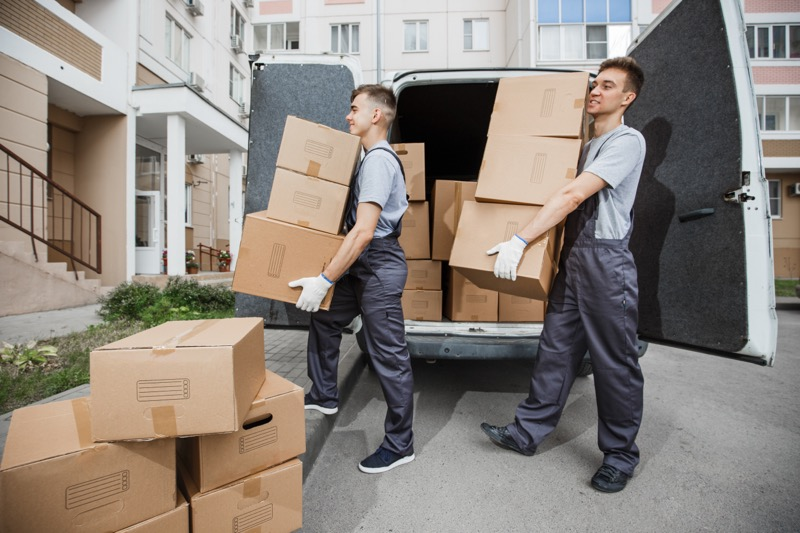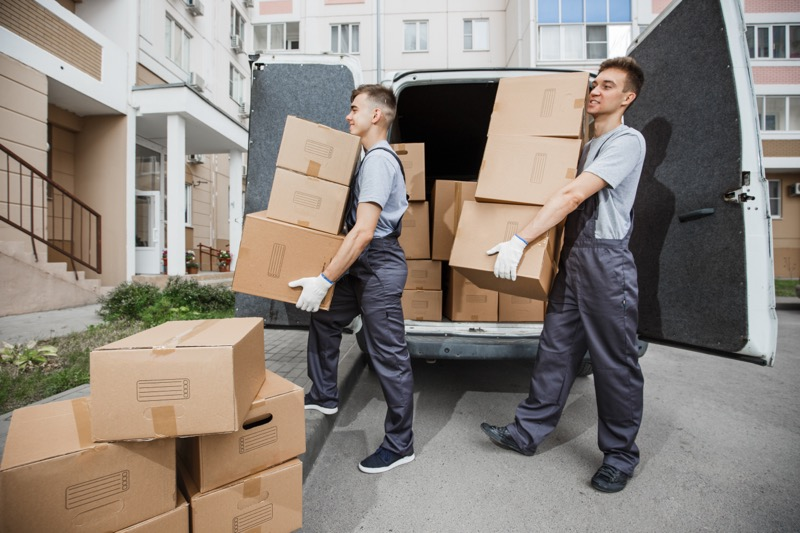Moving to a new house can be an exciting but stressful experience. There are countless tasks to complete, and it can be overwhelming to try and keep track of them all. However, with proper planning and organization, you can reduce the stress and make your move as smooth as possible.
In this guide, we will provide you with a step-by-step process to plan a stress-free house move. From decluttering and packing to hiring movers and settling into your new home, we’ve got you covered!
Step-by-Step Guide
Step 1: Declutter and Organize
Before you start packing, take some time to go through your belongings and declutter. This will not only help reduce the amount of items you need to move but also make unpacking in your new home much easier. Sort through your belongings and decide what you want to keep, donate, or throw away.
Once you have decluttered, start organizing your belongings into categories. This will make it easier when it comes time to pack and unpack.
Step 2: Create a Moving Checklist
Creating a moving checklist is essential to keeping track of all the tasks that need to be done. Write down everything from finding a new home, changing your address, and hiring movers to packing and unpacking.
Having a checklist will not only help you stay organized but also give you peace of mind as you check off each task completed.
Step 3: Pack Strategically
Start packing non-essential items first, such as seasonal decorations and out-of-season clothing. Label each box with its contents and the room it belongs to, making unpacking much easier. Pack items from the same room together to save time when unpacking.
Be sure to also pack a “first night” box with essential items such as toiletries, bedding, and kitchen essentials. This way, you’ll have everything you need for your first night in your new home without having to rummage through multiple boxes.
Step 4: Hire Movers or Enlist Help
Decide if you want to hire a professional moving company or enlist the help of friends and family. If hiring movers, be sure to get quotes from multiple companies and book well in advance.
If enlisting the help of loved ones, be sure to schedule a specific date and time for them to come and assist with the move.
Step 5: Notify Important Parties
Don’t forget to notify important parties of your move, such as utility companies, banks, and insurance providers. This will ensure a smooth transition and avoid any issues with bills or services.
Also, remember to update your address with the post office and let friends and family know your new address.
Step 6: Take Care of Last-Minute Tasks
As moving day approaches, there will inevitably be last-minute tasks that need to be taken care of. This could include canceling or transferring memberships and subscriptions, arranging for pet care on moving day, or making sure all important documents are safely packed and easily accessible.
It’s important to stay organized and prioritize these tasks to avoid any added stress on the already hectic moving day. Refer back to your moving checklist and make sure everything is checked off before you leave your old home.
Step 7: Settle Into Your New Home
Congratulations, you’ve made it to your new home! While the moving process may be over, there are still a few important tasks to complete. Start by unpacking and organizing your belongings according to the categories you created earlier.
Next, make sure all utilities and services are set up and functioning properly in your new home. Familiarize yourself with the neighborhood and nearby amenities.
Take some time to explore and make your new house feel like a home. And most importantly, don’t forget to take a break and celebrate this new chapter in your life! So, this is how you can plan a stress-free move step by step.
Tips for a Stress-Free Move
Here are a few additional tips to help make your move as stress-free as possible:
Give yourself plenty of time:
Moving is a process that requires time and energy, so it’s essential to give yourself plenty of time to plan and prepare. Start by creating a timeline for your move and stick to it as much as possible. This will help you stay organized and avoid any last-minute panic.
Be sure to also schedule breaks in between tasks to avoid burnout. Taking breaks will not only give you a chance to recharge but also allow for any unexpected delays. By giving yourself enough time, you’ll be able to tackle each task with ease and avoid feeling overwhelmed.
Make Moving Easier With Technology:
Take advantage of apps and online tools that can help make your move more efficient and less stressful. There are many organizing and inventory apps available that can help you keep track of your belongings, create packing lists, and even find movers. Some apps even offer virtual walkthroughs of your new home to help with furniture placement and layout.
You can also use technology to stay connected with loved ones during the move. Share photos and updates on social media or video call friends and family to show them your new space. This will not only make the transition easier but also help you feel more supported during a potentially stressful time.
Take Care of Yourself:
During the chaos of moving, it’s easy to neglect self-care. However, taking care of yourself is crucial to managing stress and staying healthy during this transition.
Make sure to eat well, stay hydrated, and get enough rest throughout the process. Don’t be afraid to take a break and do something relaxing, like going for a walk or reading a book. Taking care of your mental and physical well-being will make the moving process much more manageable.
Stay Positive:
Moving can be emotionally and physically taxing, but it’s essential to try and stay positive throughout the process. Focus on all the exciting possibilities that come with this new chapter in your life.
Remember that moving is a temporary inconvenience for a long-term gain. And, before you know it, you’ll be settled into your new home and making new memories. Stay positive, and don’t forget to ask for help if you need it.
Take Note of Your New Neighborhood:
Once you’ve settled into your new home, take some time to explore and get to know your new neighborhood. Find out where the nearest grocery store, pharmacy, and post office are located. Familiarize yourself with public transportation options and any local parks or recreational areas.
Making connections in your new community can also help alleviate feelings of stress and loneliness. Attend local events or join community groups to meet new people and become more comfortable with your surroundings.
Common mistake for avoid
Even with careful planning, moving can be a stressful experience. However, there are some common mistakes that you can avoid to help make the process smoother.
Not Decluttering Before Packing:
Packing and unpacking is already a time-consuming task, so don’t make it harder by bringing unnecessary items to your new home. Take some time before packing to declutter and get rid of items you no longer need or want.
Consider donating or selling gently used items, and toss anything that is old or broken. This will not only save you time and energy but also reduce the amount of stuff you have to pack and unpack in your new home.
Not Labeling Boxes:
Labeling boxes may seem like an unnecessary step, but it can save you a lot of time and frustration when unpacking. Be sure to clearly label each box with its contents and the room it belongs in.
You can also color-code boxes by labeling them with different colored markers or using colored tape. This will make it easier for movers to know where each box goes, and help you quickly find what you need once you start unpacking.
Not Packing an Essentials Box:
A common mistake people make when moving is not packing an essentials box. This box should contain all the items you’ll need for your first night in your new home, such as toiletries, medications, and a change of clothes.
It’s also a good idea to include some cleaning supplies and basic tools in this box so you can start getting your new home in order right away. Having an essentials box will save you from having to rummage through multiple boxes to find what you need on the first night.
Forgetting to Change Your Address:
With all the tasks involved in moving, it’s easy to forget about changing your address. However, not updating your address with important organizations and services can cause major headaches and delays.
Be sure to change your address with the post office, banks, utilities, and anyone else who needs to know. You can also set up mail forwarding for a few months just in case you forget to update your address with someone.
FAQs
How do I estimate the amount of packing materials needed for my move?
Assess the volume of your belongings to determine the quantity of packing materials such as boxes, bubble wrap, and tape. Consider the fragility of items and prioritize protective materials for breakables.
What factors contribute to the overall cost of moving house?
Moving costs depend on various factors, including the distance of the move, the amount of how much stuff being transported, moving truck, additional services from the removal company, and whether you opt for professional packing assistance.
When is it advisable to hire a professional removal company?
If you have a substantial amount of furniture and personal items, hiring a removal company is often beneficial. They provide expertise, efficient packing, and safe transportation, minimizing the stress associated with the whole process.
What are some effective packing tips to streamline the moving process?
Begin packing well in advance, room by room, and label each box with its contents and destination room. Utilize bubble wrap for fragile items, and consider color-coding or numbering boxes for easy identification upon arrival at your new home.
How can I reduce unnecessary stress during the moving process?
To minimize stress, declutter before packing, donating or selling items you no longer need. Keep personal items, important documents, and essentials separately for easy access.
Conclusion
Moving can be a stressful and overwhelming process, but with proper planning and self-care, it doesn’t have to be. Remember to give yourself plenty of time, use technology to your advantage, take care of yourself, stay positive, and familiarize yourself with your new neighborhood.
Avoid common mistakes like not decluttering before packing or forgetting to change your address. By following these tips, you can have a smoother and more enjoyable moving experience. Good luck with your move!







